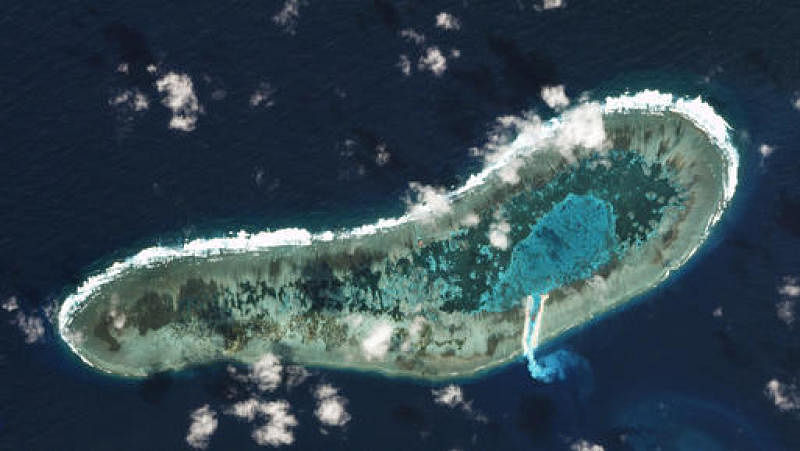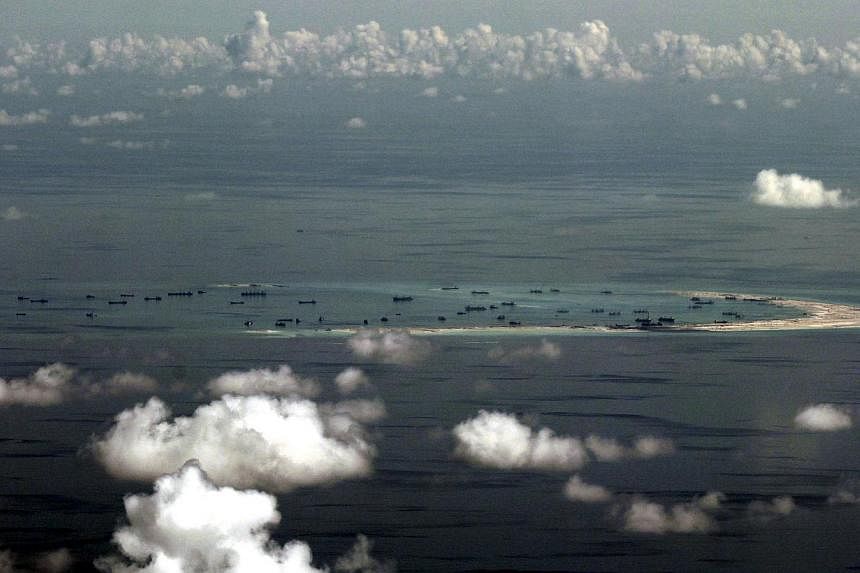THE heat being generated outside China about its putative threat to commercial shipping in the South China Sea because of activity in the Spratly Islands is becoming tiresome. (Note: The term "sea lines of communication", SLOC, is often used in these debates as a substitute for "commercial shipping", though in normal parlance the two are not completely synonymous.) It is not clear who invented the "China SLOC threat" thesis but it does not stand close scrutiny.
Here are a few considerations that may stimulate a rethink.
First, China does not need the Spratly Islands to threaten north-bound shipping in the South China Sea. It could do so easily, if it wanted to, without controlling this disputed island group. China's Southern Fleet is headquartered in Hainan, which sits in a commanding position opposite the Philippines in the area that overlooks the northern-most egress from this semi-enclosed sea. China's mainland province of Guangdong has 4,300km of coastline that forms one side of this sea egress. The distance between this coastline and the Philippines' coast is around 800km and this area is in relatively easy reach of China's maritime military assets.
Most of the tiny islands and submerged reefs in the Spratly group are more than 800km from Hainan Island. Chinese military leaders would have to be mad before they used these remote and tiny islands as the foundation for an anti-shipping campaign.

Any country wanting to mount a sustained attack against shipping would use land-based air assets supported by a secure supply chain before it would use sea-based assets, such as submarines, or an air strip in mid-ocean built on a submerged coral reef remote from any secure supply chain.
Second, China almost certainly imports as much oil through the South China Sea as, say, Japan, and possibly more.
According to BP, China's oil imports in 2013 were 282 million tonnes, compared with 178 million tonnes for Japan. Just what share of China's imported oil goes through the South China Sea is unclear, but these two countries have a near-identical interest in protecting shipping in the semi-enclosed sea.
According to the US government this year, at least 60 per cent of Chinese oil imports last year came from countries whose oil exports would have to use maritime South-east Asia to reach China. Moreover, China's economy is highly dependent on sea trade, with manufacturing employment in the main coastal cities highly dependent on seaborne trade (between China and Japan, and China and the US).
Third, the historical precedents for a campaign against commercial shipping in open ocean areas are extremely small in number since 1900.
There have been none since Germany lost hundreds of submarines in World War II in its attempt to shut down seaborne trade and block naval access to Britain. In May 1943 alone, Germany lost 46 submarines.
In fact, a modern campaign against civil shipping is judged by most naval experts to be most effective as the vessels leave port or approach the destination ports, or in narrow straits, rather than in open ocean areas, such as around the Spratly Islands.
One example of this is the war on shipping in the Persian Gulf during the Iran-Iraq War (1980-1988). The South China Sea is 3.5 million sq km in area, around 14 times larger than the area of the Persian Gulf.
In the era of satellite and sea-bed surveillance of Chinese warships, any of its combatants (surface or submarine) would be picked off by the United States and its allies before they could do much damage to allied shipping.
Moreover, the number and tonnage of ships involved in seaborne trade are today many times higher than during World War II. The increase in world seaborne trade between 1940 and now has been around 1,000 per cent (a factor of 10), with year-on-year increases expected for decades to come.
Thus, the situation in East Asia today, if we were contemplating a possible China SLOC threat compared with the Battle for the Atlantic, is (in very crude terms) 10 times more merchant ships facing 10 times fewer submarines. Even if the submarines are much more capable today, so are anti-submarine surveillance assets.
Fourth, the South China Sea (via the Malacca Strait) is a route of convenience (and lower cost) for shipping bound for Japan from the Indian Ocean. If there was a threat in the South China Sea, all shipping could simply avoid the Malacca Strait, divert south of Java, pass through the Sunda or Lombok Straits, enter the Java Sea and then the Philippines Sea to the east of the Philippines, never having entered the South China Sea.
The added distance and time would be costlier but the viability of this additional route in a conflict would undermine the value of any anti-shipping campaign focused around the Spratly Islands. This route is used fairly consistently by many larger oil tankers.
One reason the "SLOC threat thesis" has emerged is that officers of the PLA Navy have paid increasing attention to the issue themselves. The mission of sea lanes protection is now mentioned far more often in official Chinese documents than 10 years ago, in part because China has itself become far more vulnerable to interruptions of its seaborne trade. But another reason is that PLA officers are using this argument, just like their Western counterparts, as an additional lever to win more money for the defence budget.
At the same time, China's leaders know that for any country in today's world, protection of shipping is not something one country can deliver by itself. It has to be a shared international responsibility. That is what China's official doctrine of 2013 says, and I believe this to be the prevailing view in its government.
China's actions in the Spratly Islands are influenced most by the belief that the specks of sand, rock, or reef are Chinese territory. The leaders have no expectation or belief that control of the islands will enhance the country's military power projection capabilities in a way that might enable a confrontation over the safety of shipping with the world's greatest naval power and its many allies.
China is beginning to learn the hard way, and it is still learning, that its obduracy and military gambits in the Spratly Islands do not remotely serve its interests - even if its claim to the entire Spratly group were defensible.
Diplomacy by the United States is working. It is not served by exaggerating or inventing military threats, such as that related to commercial shipping.
The writer is a Professorial Fellow with the EastWest Institute in New York and a Visiting Professor at the Australian Centre for Cyber Security at the University of New South Wales, Canberra. This article first appeared in The Diplomat online.

